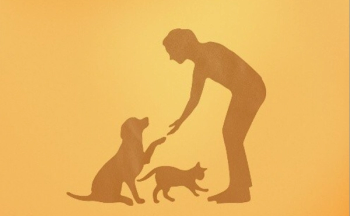
- January 2019
- Volume 4
- Issue 1
A Review of Medical Cannabis
Learn the facts about cannabis for pets so you’re prepared to educate your clients.
Although medical cannabis use has grown in popularity in both human and veterinary medicine, reservations remain among veterinarians about using it in pets. “Veterinary medicine tends to be very conservative,” said Stephen Cital, RVT, SRA, RLAT, VCCS, VTS-LAM (Res Anesthesia), at the 2018 ChicagoLand Veterinary Conference in May.
Despite this conservatism, he cautioned that “one of the worst things we can continue to do is talk or joke about animals getting high when we’re talking about cannabis products and using them as a form of medicine or supplementation.” Mr. Cital, who works at Silicon Valley Veterinary Specialists (SVVS) in San Jose, California, talked about medical cannabis, including its uses in both veterinary and human medi­cine as well as the legal complexities involved.
MARIJUANA VERSUS HEMP
To begin his presentation, Mr. Cital clarified the difference between marijuana and hemp. Although the marijuana and hemp plants are varieties of the cannabis plant and share the same gene pool, they differ in their concentrations of delta-9-tetrahydrocan­nabinol (THC), the psychoactive agent that generates a “high.” Marijuana has been bred selectively to contain high concentrations of THC (5%-20%), whereas the hemp plant has very low THC levels (≤0.3% per federal legal definitions) and traditionally has been used for industrial purposes, such as making textiles and rope.
PHYTOCANNABINOIDS AND THE ENDOCANNABINOID SYSTEM
The cannabis plant contains hundreds of compounds called phytocannabinoids, among which THC is the most well-known. Cannabidiol (CBD) is the second most commonly extracted phytocannabinoid from the cannabis plant and has proven anti-anxiety, antipsy­chotic, anti-inflammatory (analgesic), and immuno­modulatory effects. It also reportedly stimulates both osteoblasts and mesenchymal stem cells, facilitating quicker fracture healing.
Phytocannabinoids act on the endocannabinoid system, which is an extensive system of endogenous cannabinoids and cannabinoid receptors (CB1 and CB2 primarily). The endocannabinoid system, among its many functions, plays an important role in homeo­static mechanisms throughout the body. The most well-studied endocannabinoids are anandamide, a CB1 agonist discovered in the late 1960s, and 2-arachido­noylglycerol, which has a high affinity for CB2. CB2 has a relatively low sensitivity for phytocannabinoids and can be altered to increase this sensitivity.
Orphan receptors, which do not have an endogenous agonist, may be associated with the endocannabinoid system. Study results have shown that these orphan receptors respond to phytocannabinoids and CB1 and CB2 endogenous agonists. Terpenes and flavo­noids are compounds that work synergistically with phytocannabinoids to produce an “entourage effect” that enhances the therapeutic benefits and attenuates adverse events. In addition, these compounds can mitigate the psychoactive effects of THC and enhance the aroma and flavor of cannabis.
Examples of terpenes include linalool (common in lavender), beta-caryophyllene, and limonene, which has a CB1 affinity that is high enough to displace THC. Products containing phytocannabinoids and terpenes/flavonoids are called “full spectrum,” Mr. Cital explained.
TOXICITY
The rapid adoption of marijuana and hemp plant components in veterinary medicine has veterinarians struggling to keep pace with the scientific evaluation of these components. Results from pharmacokinetic and safety/efficacy studies conducted at Colorado State University and Cornell University and published last year showed that CBD-rich products are generally safe and effective for specific conditions such as pain related to osteoarthritis. Colorado State is continuing studies on the efficacy of CBD for epilepsy and chronic pain, and ElleVet Sciences is studying CBD use in cats, acute pain models, and anxiety. Preliminary data from these studies demonstrate that CBD and other nonpsy­choactive phytocannabinoids have a wide safety margin and produce minimal adverse events.
Following the state-level legalization of medical marijuana, the Pet Poison Helpline has witnessed a 330% increase in reported THC toxicities in pets. Fortunately, no animal deaths have been attributed solely to the THC molecule. The suspected lethal dose of THC in pets is so high (>9 g/kg) that “a dog is likely to fall asleep before reaching that does,” Mr. Cital said.
USES OF MEDICAL CANNABIS IN HUMANS AND ANIMALS
Medical cannabis is used commonly to reduce pain. It is also used to treat the signs and symptoms of several other conditions.
Autoimmune Disorders
Anecdotal reports indicate that dogs with shaker dog syndrome, a suspected autoimmune disease that causes a dog’s entire body to shake, have improved with CBD. At SVVS, Mr. Cital said, dogs with shaker dog syndrome that have received CBD have been taken off prednisone, a traditional medical therapy for this condition.
Neurologic Disease
CBD has proven efficacy for treating epilepsy in people, particularly for children with refractory seizures. Low THC doses have shown efficacy in treating Parkinson disease in humans.
Cancer
In vitro studies have shown the efficacy of CBD in stop­ping the growth of various cancer cell types, including gliomas and prostate cancer. Cannabinoids reportedly can enhance the therapeutic benefits of chemotherapy drugs and can even increase the efficacy of radiation therapy in animal models.
Inflammation
The abundance of cannabinoid receptors in the gut suggests that phytocannabinoids can reduce inflam­mation in such diseases as inflammatory bowel disease and Crohn’s disease in humans. At SVVS, Mr. Cital has observed improvement of inflammatory bowel diseases with medical cannabis therapy.
Kidney Disease
The CB1 agonist anandamide is present in the kidneys in dogs, cats, and people. Study results have demon­strated that increasing the levels of anandamide or other cannabinoid agonists in the kidneys can facil­itate kidney healing and improve return to function following acute kidney injury.
SELECTING A MEDICAL CANNABIS PRODUCT
The certificate of analysis (COA) is an independent laboratory analysis and one of the most important factors to consider when selecting a medical cannabis product, Mr. Cital said. The COA includes the following:
- Phytocannabinoid profile. A high level of cannabinol indicates phytocannabinoid degradation and suggests the product is old.
- Elemental analysis. This is important if the product is from another country.
- Product picture and batch number
- Pathologic examination report
- Pesticide/fungicide analysis
- Terpenoid profile
- Microbe report
“Most companies will not provide the COA unless you ask for it,” Mr. Cital said. Even if a veterinarian is not familiar with every ingredient listed on the COA, anal­ysis of the other COA components can generally indicate a product’s safety.
Other factors to consider when choosing a medi­cal cannabis product include the product’s pH and the presence of solubility enhancers. A low pH indi­cates a highly acidic environment that can convert CBD to THC, and solubility enhancers may increase the possibility of adverse effects. Notably, a high CBD concentration in a medical cannabis product does not necessarily make that product the best choice. Importantly, the company making the product should adhere to Good Manufacturing Practice regulations.
ADMINISTERING MEDICAL CANNABIS
Mr. Cital recommended a “start low and go slow” approach when treating patients with medical can­nabis. He advised starting with a dose lower than 2 mg/ kg, then gradually increasing the dose to achieve the desired effect.
Because cannabinoids are metabolized by cytochrome P450 enzymes in the liver, it is important to consider other drugs that will increase (induce) or decrease (inhibit) plasma cannabinoid concentra­tions. Phenobarbital will induce plasma cannabinoid concentration, and itracon­azole, ketoconazole, clarithromycin, cimetidine, omeprazole, and fluoxetine will inhibit it. Veterinarians should be aware that no 2 medical cannabis prod­ucts are alike and that each patient will respond differently.
LEGAL COMPLEXITIES
Human medical cannabis laws have led to dramatic decreases in the use of typical prescription medications. Instead, many human patients are opting for medical marijuana to relieve pain and reduce psychosis or depression. However, the legalities surrounding both human and animal use “change every single day,” Mr. Cital noted. The legal terminology can be convoluted and confusing, leaving many unanswered questions about how medical cannabis can be used legally.
One important legal change is that the federal government is now less likely to target small businesses that sell marijuana, particularly in states that have legalized recreational mari­juana use, in part because targeting these businesses is not cost-effective. This change is important for veterinary practices, Mr. Cital noted, given that the government is generally less interested in the administration of medical canna­bis to animals that are not entering the food supply.
Nevertheless, in some states veterinar­ians still cannot legally carry or sell medi­cal cannabis in their practices as a matter of policy, not law. Despite restrictive policy, however, legal ramifications for veterinarians selling hemp-based canna­bis products have not led to any loss of licensure to date and are highly depen­dent on individual state veterinary medi­cal boards. Veterinarians also cannot “prescribe” or recommend these prod­ucts. Interestingly, because hemp-based products are sold over the counter, veter­inarians do not need to prescribe them and they are free to legally discuss with clients what the endocannabinoid system is and how it can be supplemented.
The newly passed US Farm Bill, which includes the Hemp Farming Act of 2018, removed hemp from the federal list of controlled substances and pushed regulation to the state level. The legis­lation also allows hemp researchers to apply for grants from the United States Department of Agriculture and makes hemp farmers eligible for crop insurance.
Veterinary practices can establish affiliate programs with companies that sell medical cannabis. For pet owners who would like to purchase medical canna­bis, their veterinarian can provide them with a code (no prescription is needed) to make an online purchase from that affiliated company. The practice can then earn a commission from those sales.
The National Conference of State Legislatures website provides state-specific information on the legalities of cannabis products, including the new California law that allows veterinarians to discuss medical cannabis with clients without fear of reprisal. Additional information and education about cannabis therapy can be found in the Veterinary Cannabis Academy group on Facebook or by visiting veterinarycannabis.org. In addi­tion, Mr. Cital and more than 30 other veterinary specialists are authoring a book on safe cannabis therapy; it is expected to be released in late 2019 or early 2020.
Dr. Pendergrass received her DVM from the Virginia-Maryland College of Veterinary Medicine and completed a postdoctoral fellowship at Emory University’s Yerkes National Primate Research Center. She is the founder of JPen Communications, LLC, a medical communications company.
Articles in this issue
over 6 years ago
Advice Unleashed (January 2019)over 6 years ago
Clinical Tidbits (January 2019)over 6 years ago
EIA Is Confirmed in Multiple Texas Countiesover 6 years ago
USDA Grants $2.4 Million to Address Rural Veterinarian Shortageover 6 years ago
Dogs Dominate in US Homes, But Exotics Are Gaining Groundover 6 years ago
2019 Pet Care Trends Focus on Techover 6 years ago
FDA Approves New Productsover 6 years ago
AAFP Releases Consensus Statement on Feline Feedingalmost 7 years ago
Finnish Scientists Develop First Insect Vaccinealmost 7 years ago
Addressing an Animal Welfare CrisisNewsletter
From exam room tips to practice management insights, get trusted veterinary news delivered straight to your inbox—subscribe to dvm360.






